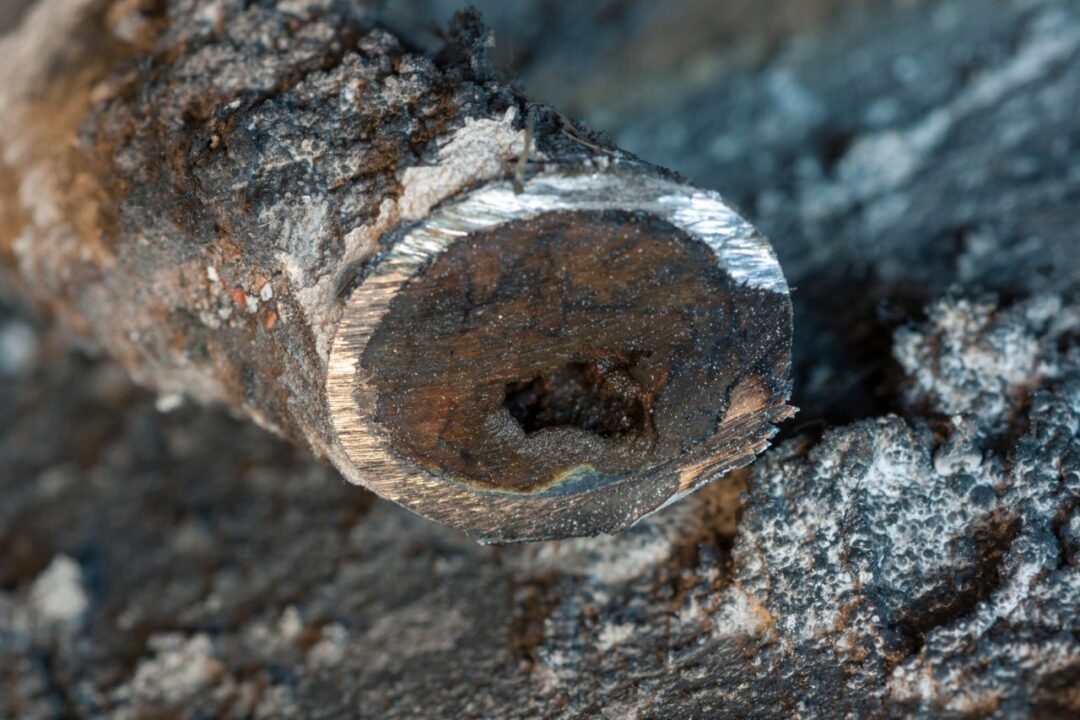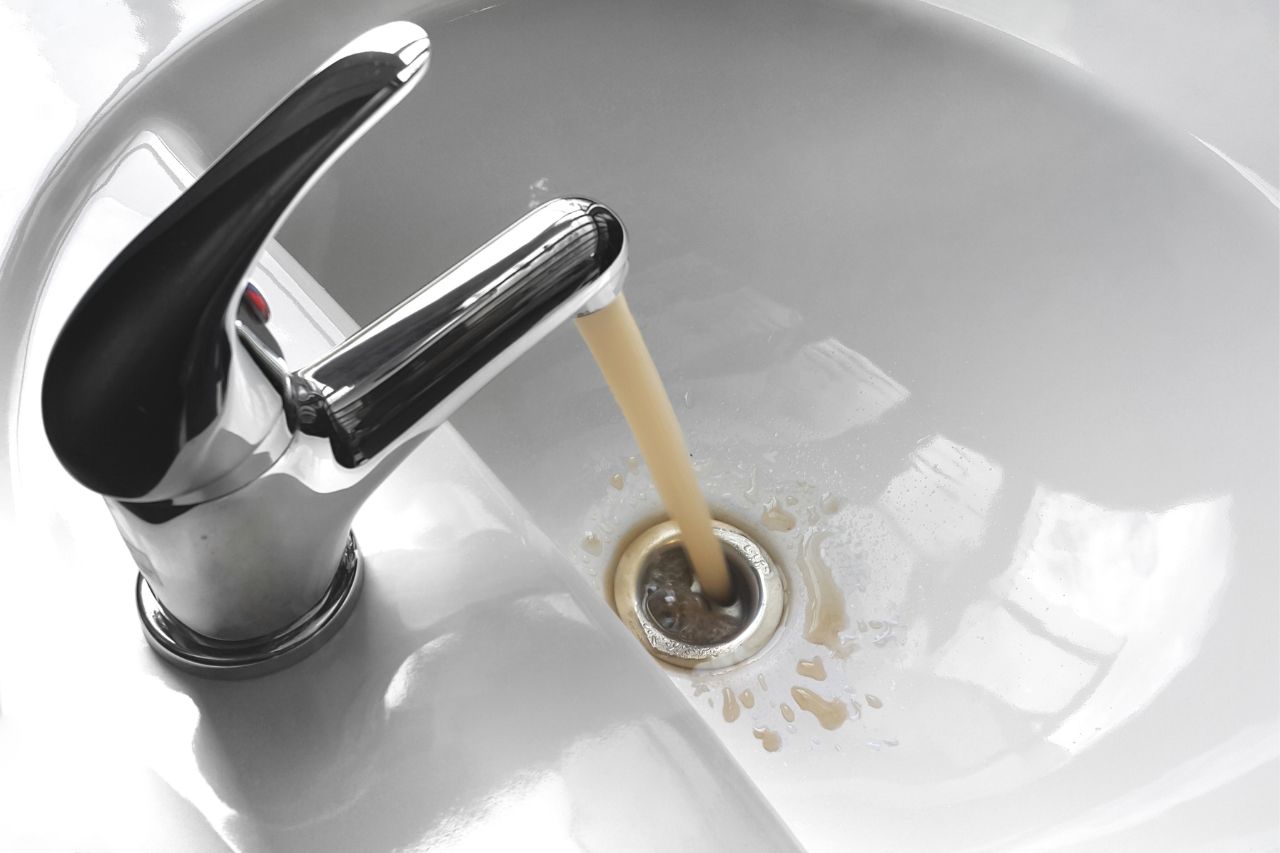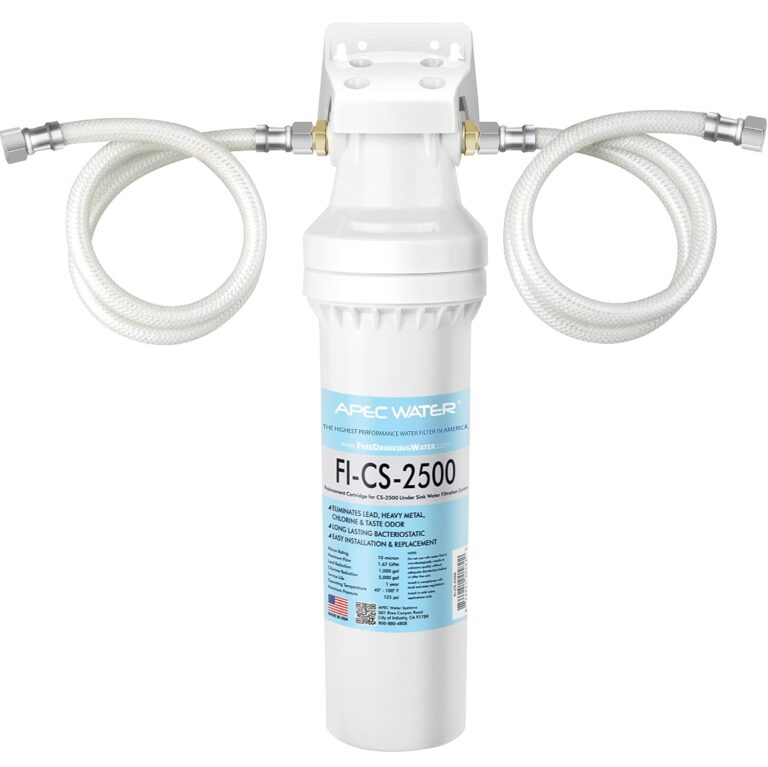Iron Water Filter System For Home
Iron contamination in well water can significantly affect the taste and appearance of your drinking water at home.
Although a small amount of iron is generally not harmful to health, excessive levels can lead to unpleasant rusty or orange-colored water with a foul taste, as well as unsightly stains on sinks and tubs.
Key Takeaways:
- Iron contamination in well water can negatively impact the taste and appearance of drinking water at home.
- Testing the iron levels in your water, either through a DIY kit or professional laboratory testing, is crucial in determining the extent of the iron contamination.
- Different types of iron can be present in water, both visible and invisible, which necessitates understanding the specific type to design an effective removal system.
- Choosing the right iron filter system, such as cartridge-based or tank-based systems, is essential based on the level of contaminants and iron present in the water, and regular maintenance and monitoring are necessary to ensure optimal performance.
How much iron is in your water?
To determine the iron content in your water, you can either use a home testing kit or opt for professional laboratory testing.
Once you know the iron concentration, it is recommended to consult a water professional to find an appropriate solution.
Iron is a naturally occurring element found in the environment and water sources like rivers and lakes.
It can also enter drinking water through natural deposits or corrosion of pipes and metallic components in your home’s plumbing system.
When iron levels in water are high, it can result in a metallic or unpleasant taste, along with reddish or brownish stains on household appliances and sinks.
Furthermore, iron can cause clogging in plumbing systems and contribute to water pressure problems.

What type of iron is in your water?
Iron in water can exist in various forms. Some types are visible, causing rust stains on plumbing fixtures or a reddish-brown color in drinking water. Other forms of iron are not visible but still impact water quality.
Knowing the specific type of iron present in your home’s water supply is crucial for designing an effective removal system.
The most common type of iron found in well water is ferrous iron.
It is dissolved in water and remains clear until exposed to oxygen or oxidation, resulting in yellow or reddish-brown stains on fixtures.
Most states provide guidelines for acceptable iron levels in well water.
Regular testing of well water can help determine whether there is an iron issue and the concentration of iron in your water.
What type of filter do you need?
To address various iron contaminants in well water, there are whole house iron filter systems available.
These filters can eliminate rust particles that discolor water, dissolved iron causing stains on fixtures and appliances, and iron bacteria responsible for orange-red stains in showers and baths.
The selection of the right iron filter depends on the level of contaminants and iron present in the water.
The top-rated iron filtration systems employ cartridge or tank-based systems to remove a wide range of impurities from water.
One effective system uses hydrogen peroxide to oxidize and filter out iron from water, eliminating the unpleasant smell caused by iron in well water.
It requires periodic maintenance, such as refilling the hydrogen peroxide tank and regular backwashing.
How do you install an iron water filter?
Installing an iron filter is common in homes reliant on well water. Iron can stain fixtures and can be challenging to clean if left untreated.
Most whole house iron filters combine oxidation and filtration methods to remove impurities from water.
Air injection oxidizers, such as those offered by SpringWell, utilize oxygen from the air to oxidize iron, sulfur, and manganese in the water passing through the media bed.
These oxidized impurities are then trapped in the greensand media and flushed during backwash cycles.
Chlorine injection can be used to eliminate iron bacteria, preventing the growth of slimy bacterial biofilm and the associated rotten egg smell.
This method can be employed in conjunction with an iron water filter or as a standalone system.
How do you maintain an iron water filter?
Maintaining an iron filter is relatively straightforward. Cartridge-based filters are simple enough for homeowners to install themselves.
However, professional installation is advisable for whole house systems to ensure proper sizing, suitable water pressure, and correct placement at the point of entry for the well.
An improperly sized or poorly installed filter can negatively impact water quality and lead to clogging over time.
A low-maintenance system designed to remove ferric and dissolved iron from water, in addition to eliminating orange/rust-like stains on toilets, sinks, and laundry caused by high iron levels, incorporates aluminum-enhanced birm media.
This system treats water by introducing oxygen, separating iron into insoluble flakes that are then flushed out of the tank during backwash cycles.

When do you replace an iron water filter?
Monitoring the performance of your iron water filter is essential, just like any other home filtration system.
If you observe that iron levels remain high or the water continues to appear discolored, it may be time to replace the filter.
A reliable iron water filter should effectively target both ferric and organic complex iron while reducing other impurities like manganese, hydrogen sulfide, calcium, chlorine, zinc, and lead.
By using such a filter, you can enjoy cleaner, better-tasting water for various household needs, including laundry, kitchen use, and bathing.
Consulting a water treatment professional can help test your well water for iron and other contaminants, as well as guide you in selecting the most suitable iron filter for your requirements.
With the right iron water filter, you can ensure a consistent supply of healthy, clean water for years to come.
It is advisable to test a water sample downstream from the filter annually to confirm proper system operation.
Conclusion
In conclusion, addressing iron contamination in well water is essential for maintaining the taste, appearance, and overall quality of your home’s drinking water.
Testing the iron levels in your water and consulting a water professional will help determine the appropriate solution for your specific needs.
Whether you opt for a cartridge-based or tank-based iron filter system, it is crucial to select a reliable and properly sized system to effectively remove iron and other impurities from your water.
Regular maintenance and monitoring of the filter’s performance will ensure continued efficiency.
By investing in a high-quality iron water filter and following proper maintenance protocols, you can enjoy clean, healthy water for all your household needs for years to come.







